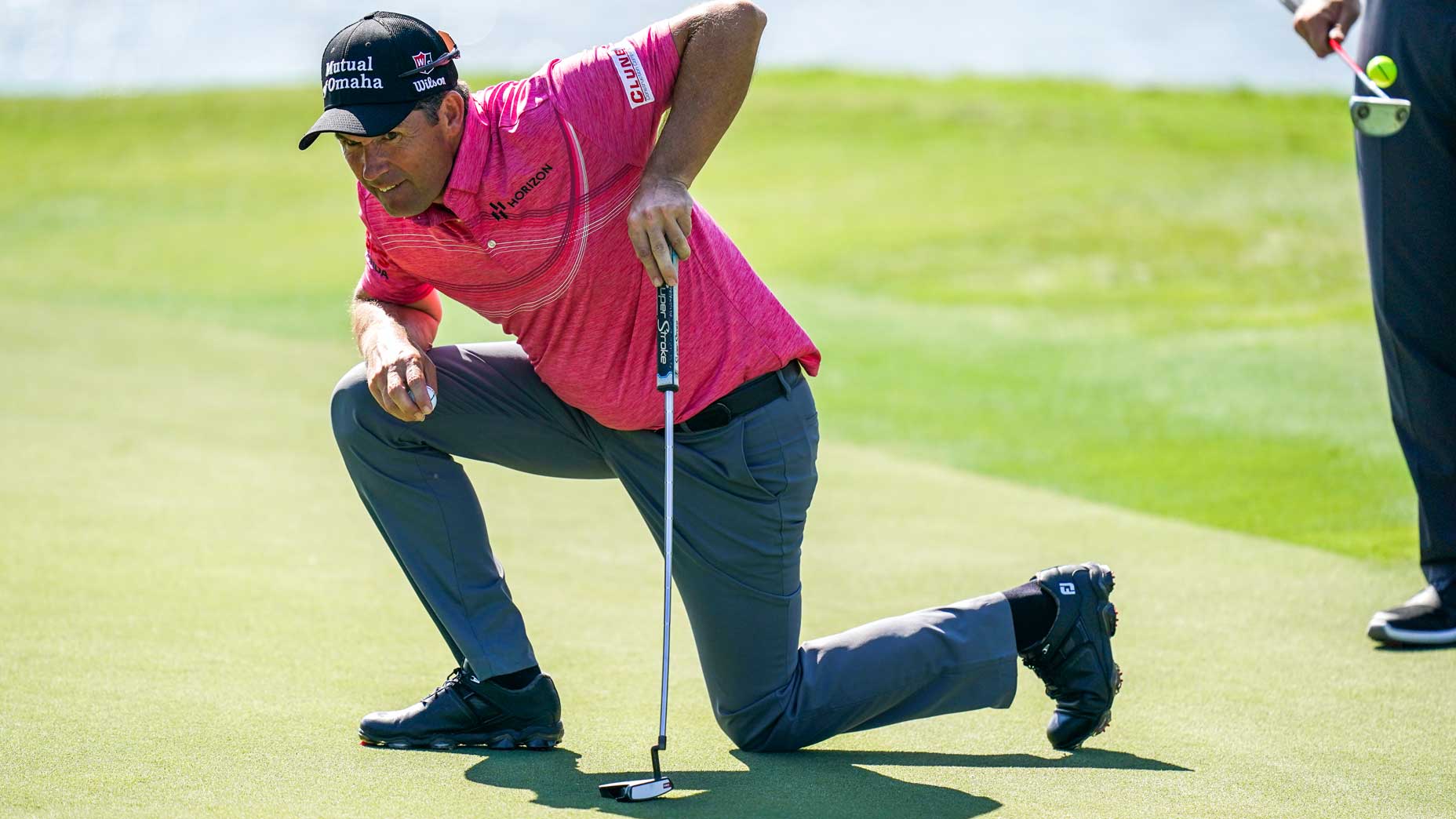
In this edition of “Paddy’s Golf Tips,” the three-time major winner explains a simple tip to improve your green reading.
Getty Images
Green reading is an art — and an under-appreciated one at that. With all the resources available these days — greens books, caddies, etc. — it can be easy to take for granted how huge an element green reading is in being a good putter. But if you can’t properly read greens, you’ll never elevate your putting to an elite level.
The problem with green reading is that few recreational golfers know what it takes to be a good green reader. Most people will just eyeball their putt a few seconds before they hit the ball, step up and go. Sometimes, that will yield positive results, but often, this inexact process will not produce holed putts.
One way to improve your green reading, according to Padraig Harrington in his latest edition of “Paddy’s Golf Tips,” is to gather as much information as possible while you wait your turn to hit. This means not simply reading your putt, but also analyzing how your playing partners balls react once they get rolling on the green as well.
Before your putt, look around the green
“Firstly, when you read the greens, you start from when you’re walking up to the green,” Harrington says. “If you got to see your shot running on the green or your playing partner’s chip — if you get to see their putt on the green — always watch everybody else and watch how the ball, especially as it’s dying, what direction it’s going and what speed it’s going at.”
If you want to read the greens like the three-time major winner, the process of reading the green starts well before you even get to your ball. You can learn a lot from watching how balls roll once they get to the green — chips and putts alike — and these tidbits of information can be the difference in holing a putt or not.
Need help on the greens at your home course? Pick up a Green Book from our affiliate company, Golf Logix.









